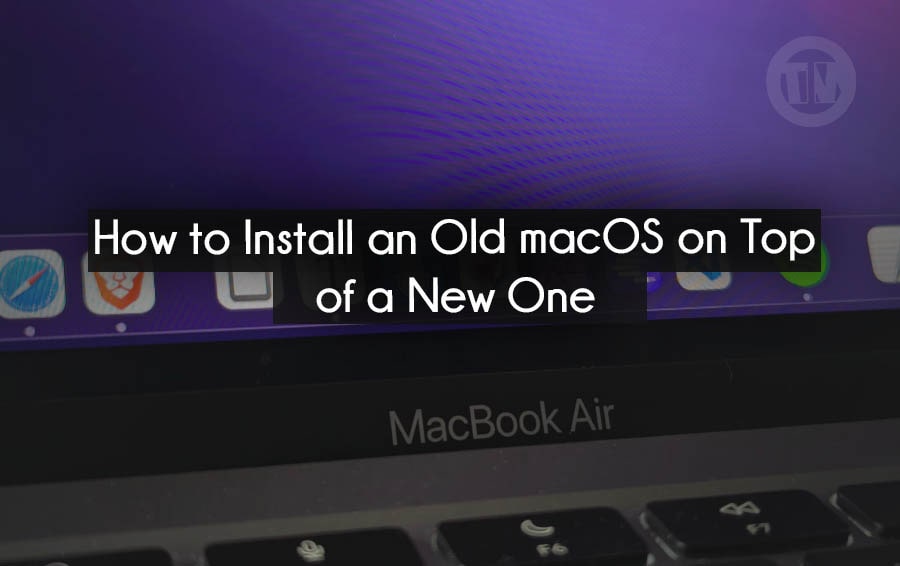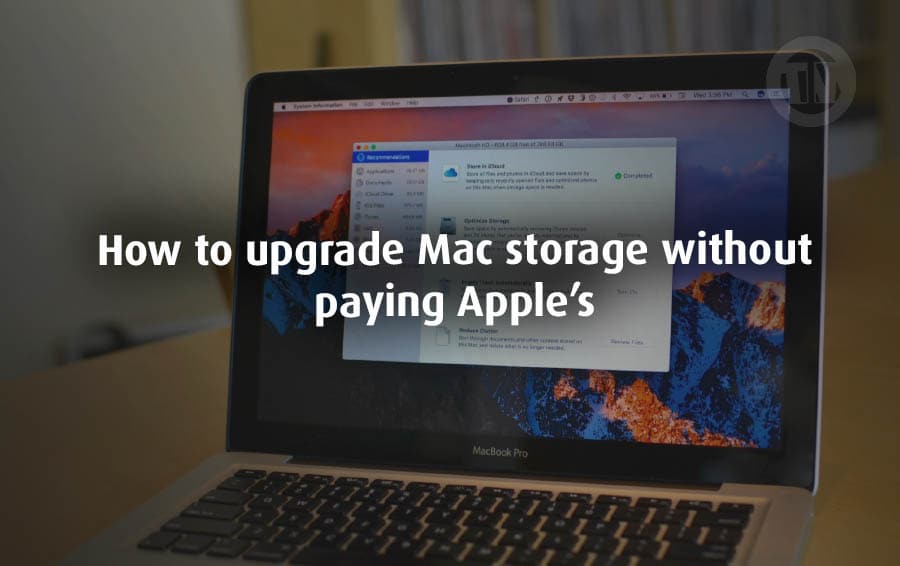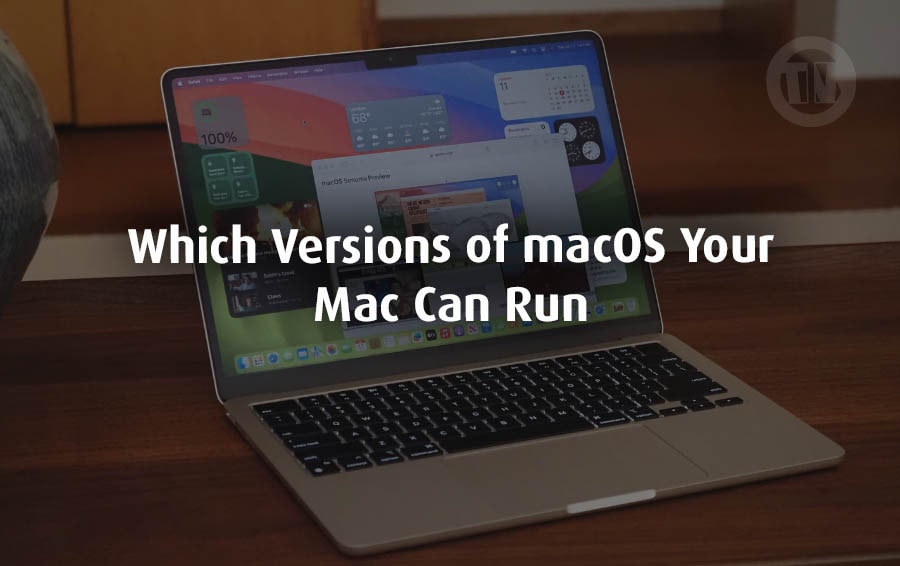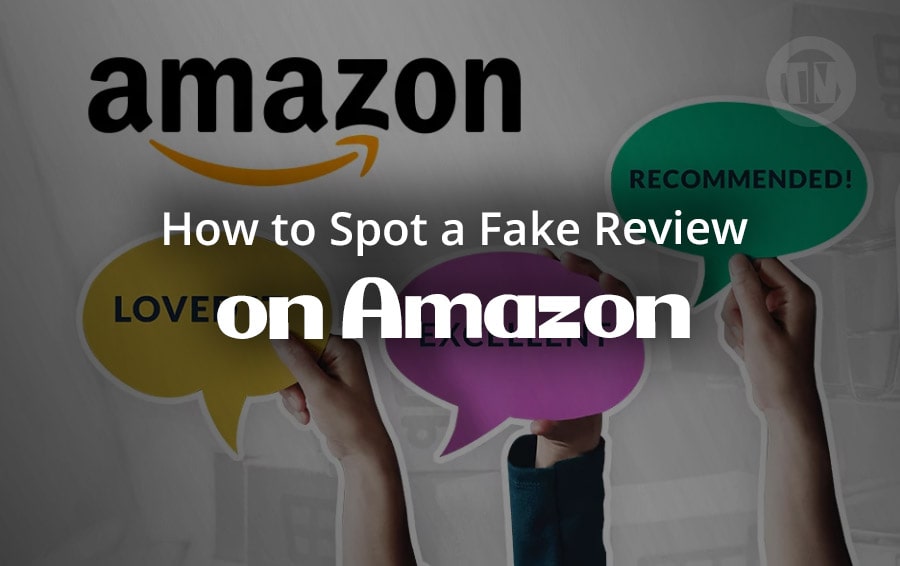
When shopping online, especially on massive platforms like Amazon, we’re often faced with a sea of product reviews. Some are genuinely helpful and reflect the experiences of real buyers, while others may be fake or misleading.
It’s important to know whether these are genuine reviews from people who have actually purchased the product you want, or whether they’re just fake reviews to convince you. This is because the context of online shopping means we don’t know what the item we’re buying actually looks like.
With a little effort, you can spot the red flags and avoid getting fooled by fake, misleading reviews. So, let’s discuss what you should look for when reading reviews to make sure they’re reliable.
What to Look For in Product Reviews on Amazon
First and foremost, it’s crucial to pay attention to reviews that provide context. Good reviews typically offer a detailed account of the buyer’s experience with the product.
Instead of just throwing out a vague “This is great!” or “This is awful!”, a solid review will explain why the product is great or terrible.
Did the product meet expectations? Did it arrive on time? How well did it perform in everyday use? These are the kinds of things you want to look for, not just a glowing or scathing rating with no context.
Be wary of reviews that feel a little too generic. For example, if a review only says, “Amazing product! I love it!” with no explanation, it could be a fake.
Real reviews are often more nuanced and offer a clearer picture of the pros and cons. Another thing to watch out for is if the review promotes other products or mentions competitors.
A real reviewer typically focuses on the product at hand, not trying to convince you to buy something else. If you see a product mentioned in a way that feels like it’s nudging you towards another brand, that’s a big red flag.
Next, check the tone of the language. A lot of fake reviews tend to use overly formal or awkward phrasing that doesn’t sound natural.
If the language feels too perfect or too rehearsed, it might be a sign that the review is fake, especially if the writing doesn’t seem like something a regular person would say. On the other hand, a genuine review will feel more personal and conversational, even if it’s a bit rough around the edges.
Also, keep an eye on reviews that are either overly positive or negative without giving enough details. For instance, if someone gives a product five stars but doesn’t explain why, or if they slam it with one star but offer no concrete reasons, these reviews might not be as reliable.
Genuine reviews tend to give a well-rounded perspective, balancing both the good and the bad with clear examples to back up their claims.
You should also be cautious of brief reviews—especially when they come in droves. Imagine you’re scrolling through Amazon and see a bunch of one-star or five-star reviews that were posted on the same day.
It often means that something fishy is going on, like a company trying to flood the page with fake reviews. Trustworthy reviews usually come in a more spread-out pattern, with varied experiences over time.
How Amazon Tackles Fake Reviews
Amazon has taken some steps to combat fake reviews, and one of those is the Verified Purchase badge. When a review has this label, it means the reviewer bought the product through Amazon, so there’s a better chance that the review is authentic.
However, this doesn’t completely eliminate the possibility of fraud. Some sellers may incentivize customers to leave a review in exchange for discounts, and while these purchases are legitimate, the reviews may still be biased or manipulated.
Even with the Verified Purchase badge, compensated reviews still slip through the cracks. Some companies offer gift cards or discounts to customers who leave reviews, and while the purchase may be legitimate, the review might not be entirely honest.
So, while the Verified Purchase tag is helpful, it doesn’t guarantee authenticity 100% of the time. If you spot a review that feels off, you can report it to Amazon for further investigation.
Just click on the Report button under the review to flag it, and Amazon will look into it.
How to Detect Fake Reviews Using Tools
1. Fakespot
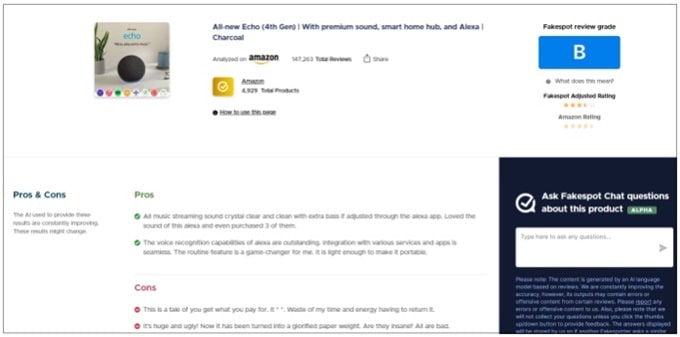
Fakespot is a powerful tool that helps you assess the reliability of product reviews on Amazon (and other sites like Best Buy, eBay, and Walmart). Fakespot uses an algorithm that analyzes the language used in the reviews, the reviewers’ history, and their purchase patterns.
It can then generate a grade that tells you how trustworthy the reviews are.
To use it, you simply paste the URL of the product page into Fakespot’s analyzer. For example, if you were looking at an HP E27m G4 QHD, Fakespot would evaluate the reviews and give you a grade.
In our test, the product had a 4.5-star rating on Amazon, but after running it through Fakespot, the adjusted rating dropped to 3.5 stars. This indicated that some of the reviews were likely fake or unreliable.
Fakespot also provides a grade for the product page itself, letting you know if the reviews are generally trustworthy. If the grade is low (say, a B or C), that’s an indicator that you should be cautious before making a purchase.
Fakespot makes it even easier to spot fake reviews with its browser extension for Chrome, which allows you to analyze a product page with just one click. It also has mobile apps for iOS and Android, making it easy to check reviews from your phone while shopping on the go.
2. TheReviewIndex
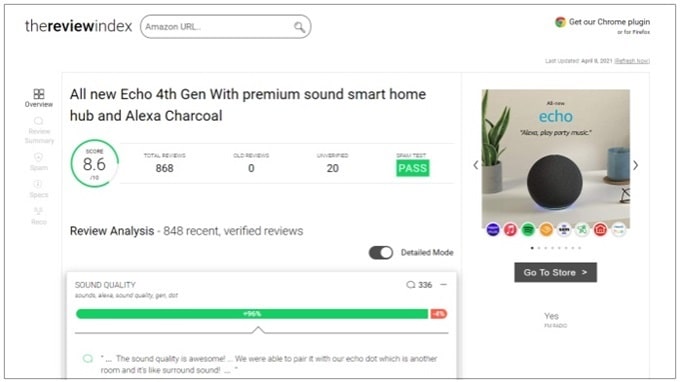
TheReviewIndex specializes in aggregating ratings from Amazon to give you a clearer picture of a product’s overall score. While it focuses on tech items, it can be applied to a wide range of products that have detailed reviews.
All you have to do is paste the URL of the product into the website, and it goes to work analyzing the reviews. Once the product’s URL is entered, TheReviewIndex analyzes the reviews and breaks the feedback into various categories.
This categorization is based on key terms and phrases found in the reviews, helping you get a better sense of how users feel about different aspects of the product. For example, it might group reviews under categories like “performance,” “build quality,” “ease of use,” or “value for money”.
One of the best parts of TheReviewIndex is its spam test feature. This test checks whether the reviews seem authentic or artificially inflated by fake accounts or manipulative tactics.
It analyzes patterns in the review data and flags any suspicious activity that may suggest reviews are being generated by bots or incentivized users. After the analysis, it provides you with a Pass/Fail grade, which tells you if the reviews for the product are trustworthy or not.
For example, in our test with a popular product, TheReviewIndex gave it an 8.6 score and a passing spam grade, meaning the reviews were likely real and not artificially boosted. However, it’s worth noting that the site only analyzed the most recent 848 reviews, so the analysis might not account for older reviews or long-term trends.
Another cool feature is that TheReviewIndex doesn’t just give you a single number for the product’s overall score. It provides pulled clips from reviews—both positive and negative—that fit under the different product categories.
3. ReviewMeta
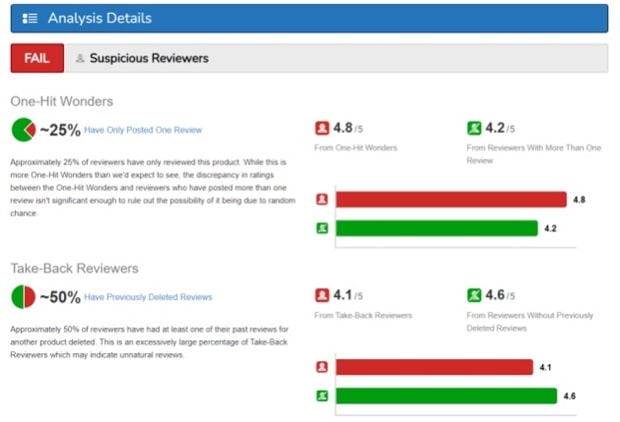
ReviewMeta is another useful tool that helps you identify suspicious reviews. It works by eliminating the reviews that seem unreliable and adjusting the overall rating to give you a more accurate picture of the product’s true quality.
After you paste an Amazon URL into ReviewMeta, the website will provide you with an adjusted rating based on its analysis of the reviews.
ReviewMeta also breaks down the results into a report card that gives each factor a Pass, Fail, or Warn grade. For example, it might flag issues like suspicious reviewer behavior (e.g., reviewers who only review one product or whose past reviews have been deleted).
This gives you more insight into whether the product’s rating is skewed by fake reviews.
While ReviewMeta provides a helpful analysis, it’s worth noting that its reports are preliminary and not all reviews are included. For a more complete analysis, you can enter your email to receive a full report.
4. AI-Generated Reviews
One thing that’s becoming more common in online shopping is AI-generated reviews. With the advent of advanced artificial intelligence, it’s now possible for bots to generate reviews that mimic human writing styles.
These reviews can seem convincing at first glance, but if you look closely, they might have odd sentence structures or strange phrasing that makes them feel off.
TheReviewIndex, while great at detecting spammy reviews, doesn’t specifically focus on identifying AI-generated content. But if you’re really concerned about whether a review was written by a human or a bot, there are tools out there that can help you with that.
GPTZero, Writer AI content detector, and ZeroGPT are just a few of the services that analyze text to determine if it was written by an AI or a person. You simply paste a section of text (like a review) into the tool, and it gives you a score indicating whether it’s likely AI-generated.
These tools are pretty accurate, but keep in mind that the results can be a bit off when dealing with shorter texts—like product reviews—since they might not have enough content for the tool to analyze properly.
Even so, it’s worth giving these tools a try if you come across a review that feels a little too robotic or lacks the natural flow of human language.
Conclusion
Online shopping is the norm, knowing how to spot fake reviews is more important than ever. Using a tools that can help you spot a fake review is very helpfull, that can save you from scamming product.
So next time you’re on Amazon or another online retailer, take a moment to run the product through thats tool before making your final decision. It might save you from falling for a fake review, and ultimately, help you make a smarter, more informed purchase.


